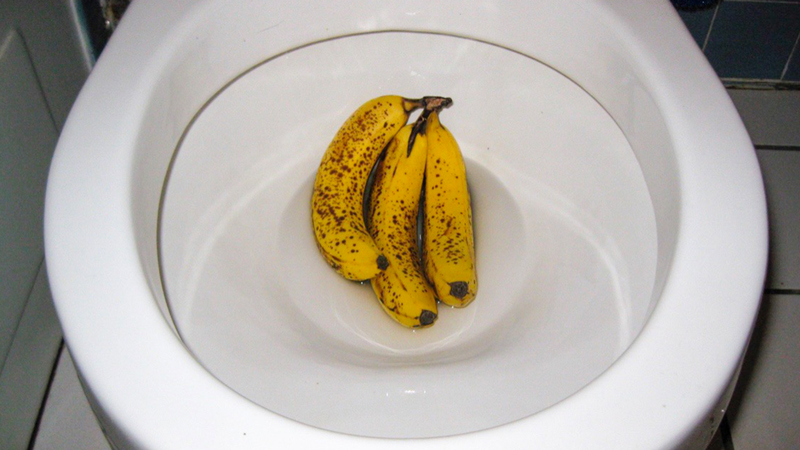We've unearthed this post involving Flushing Food Down the Toilet? down the page on the net and decided it made good sense to share it with you on this site.

Intro
Lots of people are frequently faced with the predicament of what to do with food waste, especially when it comes to leftovers or scraps. One typical concern that develops is whether it's alright to flush food down the toilet. In this article, we'll look into the reasons that individuals might consider flushing food, the effects of doing so, and alternate methods for correct disposal.
Reasons individuals may consider flushing food
Absence of awareness
Some individuals might not be aware of the possible injury triggered by flushing food down the bathroom. They might incorrectly believe that it's a safe method.
Ease
Purging food down the commode may feel like a fast and simple option to getting rid of undesirable scraps, particularly when there's no close-by trash bin available.
Laziness
Sometimes, individuals may merely choose to flush food out of large laziness, without taking into consideration the repercussions of their activities.
Repercussions of flushing food down the commode
Environmental effect
Food waste that winds up in rivers can add to pollution and damage water communities. In addition, the water made use of to purge food can stress water sources.
Pipes concerns
Flushing food can bring about clogged pipelines and drains pipes, causing costly pipes repairs and hassles.
Types of food that must not be flushed
Fibrous foods
Foods with coarse appearances such as celery or corn husks can get tangled in pipes and cause blockages.
Starchy foods
Starchy foods like pasta and rice can take in water and swell, resulting in clogs in pipes.
Oils and fats
Greasy foods like bacon or food preparation oils ought to never be purged down the toilet as they can solidify and trigger clogs.
Appropriate disposal approaches for food waste
Using a waste disposal unit
For homes geared up with waste disposal unit, food scraps can be ground up and purged via the pipes system. Nonetheless, not all foods appropriate for disposal in this manner.
Recycling
Certain food product packaging products can be reused, lowering waste and minimizing ecological influence.
Composting
Composting is an environmentally friendly method to take care of food waste. Organic products can be composted and utilized to improve soil for gardening.
The value of appropriate waste management
Reducing environmental injury
Appropriate waste administration practices, such as composting and recycling, assistance reduce pollution and protect natural resources for future generations.
Protecting plumbing systems
By preventing the technique of flushing food down the bathroom, house owners can prevent expensive pipes repair work and preserve the stability of their plumbing systems.
Final thought
To conclude, while it may be tempting to flush food down the bathroom for benefit, it is necessary to recognize the prospective repercussions of this activity. By adopting correct waste monitoring methods and throwing away food waste properly, people can contribute to healthier pipes systems and a cleaner environment for all.
FLUSH FOOD DOWN THE TOILET?
FLUSHING FOOD CAN CAUSE BLOCKED DRAINS IN YOUR HOME
All of the plumbing fixtures in your home are connected to the same sewer pipe outside of your home. This outdoor sewer pipe is responsible for transporting all the wastewater from your home to the Council sewer mains. Even small pieces of food that go down the kitchen sink can cause problems for your sewer. It should therefore be obvious that flushing larger bits of food, such as meat, risks a clog in either the toilet itself or the sewer pipes. Flushing greasy food is even more problematic because oil coagulates when it cools, coating the interior lining of your pipes.
THE TOILET IS NOT A BIN
Food isn’t the only thing that people shouldn’t be flushing down the toilet. People use the toilet to dispose of all kinds of things such as tampons, makeup wipes, dental floss, kitty litter and even underwear. Water goes to great lengths to educate residents about the high costs and stress placed on wastewater treatment systems simply from people flushing the wrong stuff down the toilet. It costs taxpayers millions of dollars each year, and homeowners thousands in blocked drain repairs.
FLUSHING FOOD IS A WASTE OF WATER
Flushing food is a waste of our most precious resource - water. In June this year Level 1 water restrictions were introduced to protect water supply from drought conditions. Much of New South Wales continues to be affected by prolonged drought with recent figures revealing up to 97 per cent of the state remains in drought. Depending on whether you have a single or dual flush toilet, every single flush uses between five and 11 litres of water. In the current climate this is a huge amount of water to be wasting on flushing food that should be placed in the bin (or better yet, the compost).
https://www.jabplumbingsolutions.com.au/blog/can-you-flush-food-down-the-toilet

Hopefully you enjoyed our topic on What Can Happen If You Flush Food Down the Toilet?. Thank you so much for taking time to read through our piece of content. Sharing is nice. Helping others is fun. I praise you for your time. Please visit our site back soon.
Start Now